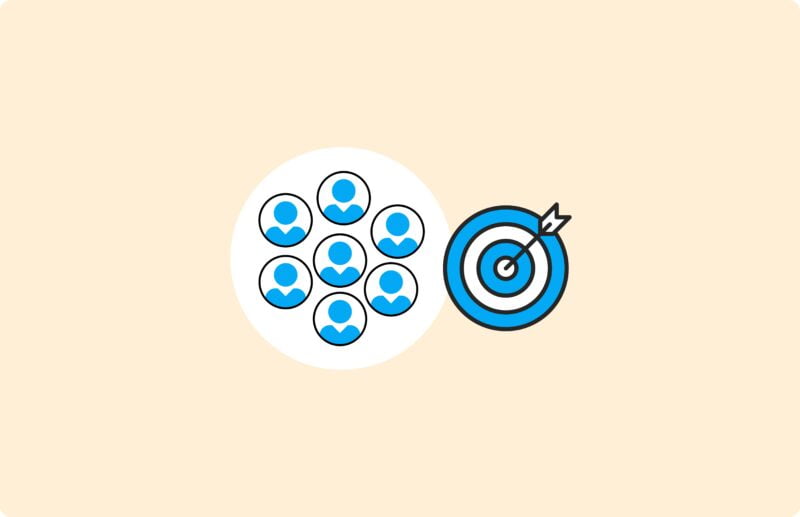The added value of the customer journey

Companies are increasingly using the strategic customer journey model to build a picture of customer interactions. Customer journey mapping creates a visual image of the customer journey, as the customer journey is also called. There are interesting conclusions to be drawn from this.
The hallmark of a customer journey is that the customer is at the center of this strategy. It becomes clear what critical moments are in the customer journey regarding the decision to make a purchase. A customer journey is not the same as a sales funnel. That is also a journey traveled by customers, but it is mapped out from the company philosophy.
Customer journey explanation
In fact, customer journey mapping is about discovering the success factors and the aspects that could be improved. In the past, companies also made an effort to keep customers at their beck and call. Then they spoke in terms such as being polite and customer-friendly, and ensuring good service. (1)

The outcome of a customer journey and the way it used to be done is the same. Customers, then and now, were an important argument for prospective customers to also make a purchase from the same company. The difference between before and now is, the process of recommending is now done online and anonymously.
Common terms used within the customer journey
Many terms are used when defining a customer journey. That can sometimes cause some confusion. Therefore, prior to discussing the various components of a customer journey, the most commonly used terms are briefly explained.
The customer journey is the customer journey itself. During the customer journey, you as a customer have regular contact with the selling party. These are contact moments, also called touch points. The customer journey proceeds in 5 stages. These can be presented graphically in conjunction with the touchpoints. Creating such a graphic is called customer journey mapping.
Touchpoints customer journey
When visualizing the customer journey, it does not matter whether you are dealing with B2B customers or B2C purchases. The customer journey involves the total process surrounding the purchase of a product or service. Central to this are the contact moments with the company, where the goal is to stimulate one of the customer’s senses.
The contact moments are called touchpoints customer journey. These touchpoints include the customer viewing a post on social media, searching for something through a search engine, looking through an advertising brochure, or communicating with others about a product. The senses that can be stimulated are seeing, smelling, tasting, feeling and hearing. (2)
Stages in the customer journey
A customer journey has several distinctive phases in addition to contact moments. During each stage, there may be contact moments that influence how the customer journey continues. The different phases can be distinguished as follows.
Awareness or orientation
The first stage of a customer journey is when a customer becomes aware of a problem or need. He will talk to others about this and look for a solution. This is often found through a search engine or through social media.

As a business, you have a better chance of getting your product seen by customers if you rank high on search engines. Advertising through social media also makes sense. It is therefore important to pay close attention to SEO optimization and perhaps online advertising.
Trade-off and consideration
At this stage, the client has a clear picture of his problem. He also knows there are solutions, but has not yet decided on a specific solution and which company can provide it. He will start comparing different solutions at this stage.
It is important for a company to effectively highlight the added value of your solution at this stage. In addition, it helps if your company has authority. This can be highlighted in reviews, where others name your quality and expertise.
Purchase
In a customer journey, the purchase phase is definitely not the end point. It is an initial moment of relief, though, because the client has chosen your solution. Now it’s a matter of making sure nothing gets in the way of the course of the purchase.
At this stage, all facilities for the buying process should be in place. Customers should be able to checkout the way they like. If he encounters problems when purchasing, they can be remedied with good customer service, such as through a chat. If the purchase fails, attempts can be made to re-trigger the customer through a retargeting campaign.
Delivery and use
During this phase of the customer journey, the proof that your product is the best must be provided. This can be done by ensuring hassle-free delivery and good coaching during commissioning. Part of the service is, that returns are possible if in reality the product does not quite meet your needs.
This phase is important for the company because at this point you are dealing with a satisfied customer. This is a good opportunity to build the relationship and invest in the future. Right now, the groundwork is already being laid for possible follow-up purchases.
Loyalty
In the loyalty phase of the customer journey, broader work is underway. The customer is to assess their customer journey. He should indicate what he was satisfied with and what could be improved. In a sense, he is being asked to become an ambassador for your company.
At this stage, you are asking for a favor from the customer. So there must be some reward in return. The effect is, the customer will make a possible follow-up purchase, or promote your company through a variety of channels.
Customer journey example
In daily practice, a significant part of a customer journey takes place online, or through telephone contacts. If you really want to make a customer journey to experience all aspects of the journey, you can visualize a visit to a large hardware store. That starts with parking the car and ends with eating an ice cream or snack after the purchase.

All phases of a customer journey are well recognized. Such as the appearance of the store, the layout of the store, touring the store, asking for information, estimating the quality of the products and testing the products. Even looking up products yourself in the warehouse, and checkout are recognizable parts of a customer journey.
Bringing logic to the customer journey
In the customer journey explanation, it is now time to add logic to the aspects discussed so far, by linking the touchpoints and the distinct phases of the customer journey. During each phase, there may be one or more touchpoints customer journey. Through customer journey mapping, you get graphical insight into the interrelationship between the two.
Additional insight can be gained in customer journey mapping by including how a customer values a contact moment. If the customer journey of many customers is overlaid as customer journey mapping, you have the ability to define an average customer profile. On that basis, the critical touchpoints can be perfected.
The usefulness of customer journey mapping
A visual representation of a customer journey is a good method for analyzing contact moments. It shows exactly which customer journey touchpoint at which stage customers are more or less satisfied. Especially for the moments about which customers are less satisfied, you have to pay attention, because these are the moments when a purchase can backfire.
Through analysis of customer journey touchpoints, the strategy can be adjusted, with a view to improving the customer experience. Ultimately, the result should be the complete completion of the customer journey.
Empathy
Analyzing customer journey touchpoints requires empathy. Sometimes it is difficult to identify what is causing a customer’s dissatisfaction. This could be because of the waiting time on a chat, the friendliness of a staff member, or because the language used during advice does not fit well with the customer’s vocabulary.
Analyzing the contact moments will ultimately lead to a better understanding of the customer. By taking the right measures with that, the tone of voice or content information, for example, can be adjusted so that the customer can move to the next stage more successfully.
Understanding one’s own customer friendliness
As a company, you are undoubtedly knowledgeable about the products and services provided. In practice, the second, third and fourth stages of the customer journey are the least problematic. In the first and last stages, however, orientation and loyalty, there is much to be gained.
Companies do not know how to connect with customers sufficiently well, especially in those phases of the customer journey. This can be improved by conducting thorough research on the target audience’s product perception. A more customer-focused attitude leads to better communication and ultimately a better relationship with customers.
- Bynder. (2024, March 22). What is a customer journey? A definition. Bynder. https://www.bynder.com/en/glossary/customer-journey/
- https://www.touchpoint.com/blog/customer-touchpoints/






